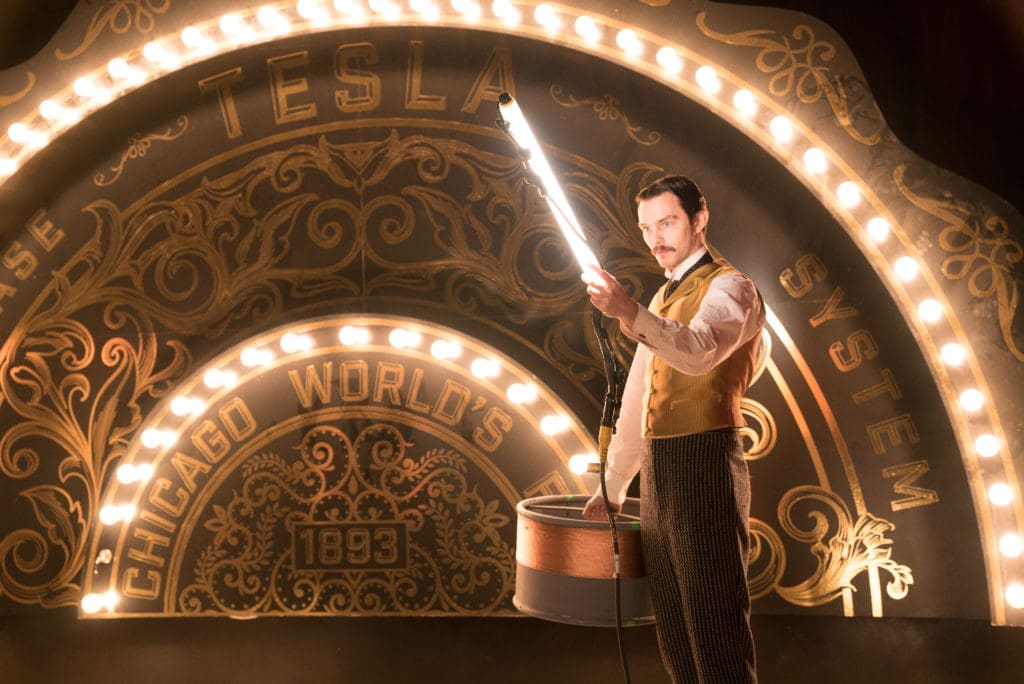
The Current War has had a troubled road to the big screen. First slated for release in November 2017, it was delayed after the sexual assault allegations against its producer, Harvey Weinstein, put The Weinstein Company’s future into question. It tells the story of Thomas Edison (Benedict Cumberbatch) and George Westinghouse’s (Michael Shannon) competition to bring electricity to America. With a cast that includes Nicholas Hoult as Nikola Tesla, Tom Holland as Edison’s protégé, Samuel Insull, and Katherine Waterston as Westinghouse’s headstrong wife, Margueritte, the film seems like a shoo-in for awards buzz. Instead, the film, which opens this week, will likely be a distant memory by the time Oscar night rolls around.
Examined by its individual parts, there’s no reason The Current War should be so easy to forget. For one, it’s beautifully made. Director Alfonso Gomez-Rejon doesn’t so much recreate the film’s late 19th century setting as give the most stylish version possible. The costumes by Michael Wilkinson are impeccably tailored, colorful and just as much an expression of character as the performances. Tesla’s dandified outfits betray his arrogance and Edison’s suggest his lack of concern for petty things like appearance. They’re also almost too perfect, clearly costumes and not something worn in normal life. The sets are similarly pristine. Edison’s disheveled workshop feels studied, every stray wire and overcrowded shelf is meant to express his wild genius.
That said, the film’s fussy production design perhaps wouldn’t be so noticeable if it weren’t for the way its filmed. As with the sets themselves, Gomez-Rejon prefers style over realism and at first, that’s an asset. Cinematographer Chung-hoon Chung’s camera is constantly moving, tracking with Edison as he enters a room or flying overhead as he lights up Wall Street for the first time. Likewise, editors Justin Krohn and David Trachtenberg rarely let a shot linger too long, showing even a simple scene where Edison’s wife Mary (Tuppence Middleton) is interviewed by a journalist from half a dozen different angles. Both techniques keep the film moving and it’s not until the film is well into its runtime before you realize you’re not really investing in the story.
Granted, that lack of investment isn’t due to the performances. While all the supporting actors do fine work — Matthew Macfayden (Succession) as J.P. Morgan is particularly memorable — it’s Shannon and Cumberbatch who really propel the film. Arguably the smartest thing the film does is cast each actor against type, playing on the audience’s familiarity with them and the real-life figures they play to examine the morality of each character’s choice. Shannon frequently plays the villain, so it’s surprising when Westinghouse is the character most committed to both his own moral code and the betterment of the world. Cumberbatch phones in another performance as the kind of prickly genius he’s played dozens of times before, but this time he’s the selfish villain unable to see the bigger picture past his own ego. It’s a surprising subversion and one that unfortunately only goes skin deep because the film isn’t concerned with the personalities behind the competition so much as the competition itself.
Ultimately, The Current War fails not due to any fault in filmmaking or performance, but in storytelling. Mitnick’s script is as focused on moving the plot forward as the inevitable march of progress Edison and Westinghouse’s competition represents. Any nuance or point about preserving moral standards in the pursuit of progress is swept away by that constant forward motion. And while there’s satisfaction in getting the audience so swiftly and stylishly to Edison’s knowing smile as he watches the invention of the very medium used to tell the story, when the lights go up, the audience feels something more hollow than the magic of those first moving pictures.

